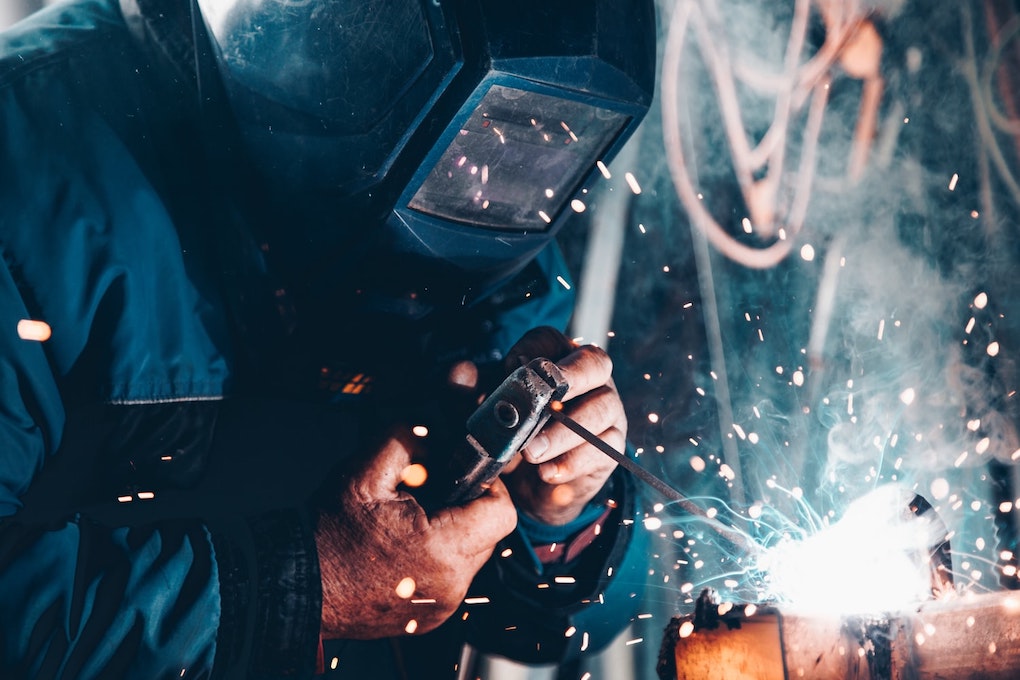If you are just starting to work with metal materials, you may have already discovered that there is a lot to learn. In particular, the world of welding can seem quite overwhelming, with so many different techniques and processes.

There are many important terms used in the welding profession, which are often simplified using abbreviations. We have put together a glossary of important welding terms. Check it out below!
MIG: ‘MIG’ stands for ‘Metal Inert Gas’ welding, one of the most common welding techniques. MIG uses a consumable electrode and an argon-carbon dioxide shielding gas to create strong welds on both thin and thick sheets of metal.
TIG: ‘TIG’ stands for ‘Tungsten Inert Gas’ welding, which is the same as ‘GTAW’ (‘Gas Tungsten Arc Welding’). TIG seems quite similar to MIG, except that the electrode is non-consumable and the shielding gas typically has an argon-helium composition. TIG is a more difficult process to master than MIG as it needs a more precise technique. It is usually used by more experienced welders or for delicate projects which require a clean finish.
FCAW: ‘FCAW’ stands for ‘Flux-Cored Arc Welding.’ This process uses different equipment to MIG and TIG welding because although the electrode is a continuously-fed consumable one (like with MIG), it has a flux at its core. This flux eliminates the need for separate shielding gas, which means that it’s suitable for outdoor projects and windy conditions. FCAW can produce dangerous gases, so it’s essential to wear adequate protection such as a welding helmet. However, if proper care is taken with safety as well as technique, then FCAW is a brilliantly fast, portable process which is ideal for manufacturing.
SMAW: ‘SMAW’ stands for ‘Shielded Metal Arc Welding,’ but you might commonly hear it being referred to as ‘stick welding.’ Like FCAW, SMAW uses flux to protect the weld pool from damaging atmospheric gases – the only difference is that in SMAW the flux coats the electrode, whereas with FCAW it’s at the centre. SMAW is a slightly more natural process to learn than FCAW as it requires less equipment and a less refined technique. It can be used with most metals – including thick, industrial steel and iron – making it one of the most popular and widely used welding techniques ever.
GMAW: ‘GMAW’ stands for ‘Gas Metal Arc Welding,’ which is a term that encompasses both MIG and MAG welding. All three of these processes use the same method of forming an electric arc between an electrode and the metal. This heats the metal and causes it to melt, creating a joint which fuses the metal pieces together. GMAW needs a shielding gas to protect the weld pool from atmospheric gases, so it isn’t suited to outdoor projects. This is because if any wind blows the gas away from the weld pool, you will end up with defective, porous joints. However, when used indoors, GMAW is an incredibly versatile process.
There is a long list of other abbreviations which you might come across during your welding career. Some other terms include:
AC: Alternating Current
AWS: American Welding Society
BMAW: Bare Metal Arc Welding
BS: British Standards
BW: Braze Welding
GMAC: Gas Metal Arc Cutting
DC: Direct Current
DCEN: Direct Current Electrode Negative
DCEP: Direct Current Electrode Positive
PAW: Plasma Arc Welding
RSW: Resistance Spot Welding
SMAC: Shielded Metal Arc Cutting (Also known as ‘hot rodding’)
STUD: Stud Welding
WFS: Wire Feed Speed
In order to master these techniques, it is essential you have the correct tools. Check out some of these essential metal-working tools and get excited for the endless potential of projects that you can create.
You can rest assured knowing that steel is the best choice when it comes to your welding projects, providing long-term, consistent performance. If you need quality steel that is fabricated to suit your unique needs, contact Steel Fabrication Services today. Our team of expert structural steel fabricators have the experience and knowledge to answer any of your questions and will ensure that you find the best solution to suit your needs. To contact us today, simply call, fax, email or drop by our Brookvale location.